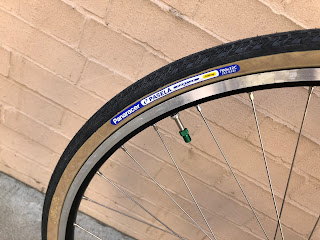Alert: I will talk politics and religion in this post.
Donald Trump may well be the first American president to rule entirely by his id.
That's the part of our psyche that reacts to immediate needs and impulses. Much of our education and acculturation is, essentially, training in not living by our ids. Of course, your teachers, parents and other authority figures don't tell you that (unless, perhaps, they're psychologists or psychiatirists). In my milieu, I don't think anyone had even heard of that two-letter term, just as they never used words like milieu. I didn't hear such words until I went to college.
Because of such training, most of us will only go so far in response to being wronged. I don't think any previous president would have assassinated the military leader of another country because, well, the leaders of their country did things we didn't like. (And he said he was doing it to prevent a war: Even Rudy Giuliani would have a hard time being more Orwellian!) Likewise, most sexual abuse victims won't do what a 19-year-old in France did to the priest who sexually abused him and his father: He rammed a crucifix down the prelate's throat.
I have retaliated with physical violence once in my life, when someone tried to sexually assault me. I'll admit I've thought about reacting with force, but didn't, on more than a few occasions. And I have made threatening gestures against potential aggressors--including a would-be bike thief I scared away.
I'll admit that at the moment I confronted the perp, I thought about doing what a couple in Visalia, California did. Corey Curnutt and Savannah Grillot baited would-be bike thieves with a bike planted in their front yard. When someone tried to steal it, they rushed out and beat, with baseball bats, the person who tried to take it.
According to police, they did this four times between July and November of the past year. I'm guessing that the vigilante couple would have been caught eventually, but they probably hastened their arrests by posting videos of their deeds on YouTube.
Now I'll confess that if I were on a jury, I really wouldn't want to vote to convict Curnutt or Grillot--or the young man in France. But one reason why we're taught not to live by our ids is that part of our psyche is incapable of restraint. Plus, almost every ethical and moral system of which I'm aware condemns retaliatory violence.
All right, I'll end with one more confession: I cheered when Thelma shot Harlan. Then I felt ashamed of myself--just a little. At least I knew "Don't try this at home."
Donald Trump may well be the first American president to rule entirely by his id.
That's the part of our psyche that reacts to immediate needs and impulses. Much of our education and acculturation is, essentially, training in not living by our ids. Of course, your teachers, parents and other authority figures don't tell you that (unless, perhaps, they're psychologists or psychiatirists). In my milieu, I don't think anyone had even heard of that two-letter term, just as they never used words like milieu. I didn't hear such words until I went to college.
Because of such training, most of us will only go so far in response to being wronged. I don't think any previous president would have assassinated the military leader of another country because, well, the leaders of their country did things we didn't like. (And he said he was doing it to prevent a war: Even Rudy Giuliani would have a hard time being more Orwellian!) Likewise, most sexual abuse victims won't do what a 19-year-old in France did to the priest who sexually abused him and his father: He rammed a crucifix down the prelate's throat.
I have retaliated with physical violence once in my life, when someone tried to sexually assault me. I'll admit I've thought about reacting with force, but didn't, on more than a few occasions. And I have made threatening gestures against potential aggressors--including a would-be bike thief I scared away.
I'll admit that at the moment I confronted the perp, I thought about doing what a couple in Visalia, California did. Corey Curnutt and Savannah Grillot baited would-be bike thieves with a bike planted in their front yard. When someone tried to steal it, they rushed out and beat, with baseball bats, the person who tried to take it.
According to police, they did this four times between July and November of the past year. I'm guessing that the vigilante couple would have been caught eventually, but they probably hastened their arrests by posting videos of their deeds on YouTube.
Now I'll confess that if I were on a jury, I really wouldn't want to vote to convict Curnutt or Grillot--or the young man in France. But one reason why we're taught not to live by our ids is that part of our psyche is incapable of restraint. Plus, almost every ethical and moral system of which I'm aware condemns retaliatory violence.
All right, I'll end with one more confession: I cheered when Thelma shot Harlan. Then I felt ashamed of myself--just a little. At least I knew "Don't try this at home."


































